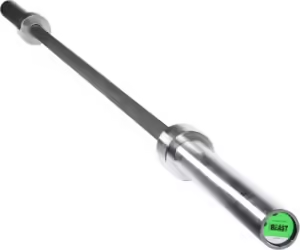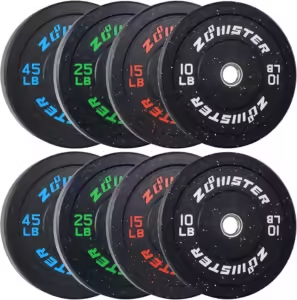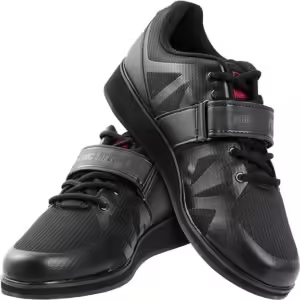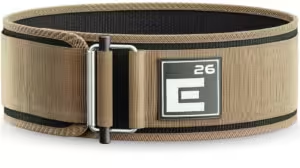If you’re serious about Olympic lifting, you know that the right equipment makes all the difference.
The best equipment for Olympic lifting doesn’t just help you perform better; it also plays a big role in ensuring safety and durability as you push your limits.
Whether you’re setting up a home gym or upgrading your current setup, the right gear can be a game-changer for improving your form, power, and overall performance.
So, what exactly should you be looking for?
Let’s break it down, piece by piece.
Why Quality Matters in Olympic Lifting
Olympic lifting isn’t just any workout.
It’s an art form that combines power, speed, and technique, requiring both mental focus and physical strength.
The best equipment for Olympic lifting not only helps you hit new PRs but also ensures you’re doing it safely.
Cheap, unreliable gear can compromise your performance and increase your risk of injury, especially when you’re handling heavy loads.
Investing in high-quality equipment is a long-term investment in your health, progress, and overall experience in the sport.
Subpar gear might save you a few bucks upfront, but the potential cost of injury or frustration in the long run simply isn’t worth it.
You want equipment that can stand up to the stress of repeated use, heavy loads, and fast, explosive movements.
Olympic Barbells
The most crucial piece of equipment is, of course, the Olympic barbell.
Not just any bar will do.
The best Olympic barbells are designed to handle the unique demands of Olympic lifting, which involves heavy weights and fast movements.
A good barbell should have a strong yet flexible shaft that can absorb the shock of heavy loads without permanently bending.
You’ll want a bar with proper whip—a slight flex that generates momentum, especially during the clean and jerk.
It should also feature knurling that offers a strong grip without tearing up your hands and high-quality bearings or bushings that allow the plates to spin smoothly and prevent torque on your wrists.
The right barbell can transform your lifting experience, making movements feel smoother and more controlled.
When you’re working on precision, every detail counts.
Bumper Plates
Next up are bumper plates—they’re non-negotiable for Olympic lifting.
Unlike regular weight plates, bumper plates are made from rubber, designed specifically to handle being dropped from overhead without damaging your floors or the plates themselves.
And let’s face it, if you’re working on explosive lifts like the snatch or clean and jerk, dropping the weight is part of the game.
The rubber coating on bumper plates absorbs impact, protecting both your barbell and the surface beneath it.
Plus, all bumper plates have the same diameter, which means the bar height remains consistent no matter how much weight you’re lifting.
This is crucial for ensuring proper form, especially during pulls.
Don’t forget to look for bumper plates that are durable enough to withstand repeated drops—lower-quality plates can crack or warp over time, affecting your performance.
Weightlifting Shoes
Shoes might not be the first thing that comes to mind when thinking about the best equipment for Olympic lifting, but they’re game-changers.
Weightlifting shoes are built specifically for stability, with a raised heel that helps you achieve better positioning during lifts.
The elevated heel allows for greater ankle mobility, which is especially helpful in maintaining an upright torso during deep squats, cleans, and snatches.
And the hard, non-compressible sole ensures you’re transferring as much power as possible from the ground into the bar.
It’s a common mistake to try lifting in running shoes, which are designed for cushioning and absorption rather than stability.
Weightlifting shoes, on the other hand, provide a firm base, which translates into better performance and a reduced risk of injury.
Once you switch to proper weightlifting shoes, you’ll notice the difference in your lifts almost immediately.
Lifting Straps
Sometimes, your grip gives out before your strength does.
That’s where lifting straps come in.
While you should definitely aim to build grip strength over time, lifting straps can be a valuable tool, allowing you to focus on your form and power during those heavy lifts.
Straps are especially useful for heavy pulls, like deadlifts or cleans, where grip fatigue can limit how much weight you can lift.
When used correctly, lifting straps can help you move more weight by taking the strain off your grip and placing the focus on your larger muscle groups.
This allows you to train harder, without being held back by your hands giving out before the rest of your body.
However, it’s important to strike a balance—use straps for your heaviest sets, but still work on building natural grip strength as part of your overall training.
Weightlifting Belts
A solid weightlifting belt isn’t just for bodybuilders or powerlifters.
It’s an essential piece of equipment for Olympic lifting, helping to stabilize your core and protect your lower back during heavy lifts.
The belt increases intra-abdominal pressure, which acts like a natural brace for your spine, giving you the added support needed when attempting maximal efforts in lifts like squats, cleans, or jerks.
While a weightlifting belt won’t replace the need for a strong core, it can certainly enhance your lifting capacity by offering extra stability when lifting near or at your max.
Use it strategically during your heaviest sets and for lifts that require added stability, but don’t rely on it for every lift.
Building a strong core without a belt should still be a key part of your training program.
How to Choose the Best Equipment for Olympic Lifting
So, how do you pick the best equipment for Olympic lifting?
Consider these key factors when making your decision:
– Durability: Olympic lifting gear takes a beating—repeated use, heavy loads, and explosive movements are tough on your equipment. Ensure the gear you choose can handle that without wearing out.
– Performance: Look for equipment that not only lasts but also enhances your performance. A bar with proper whip, for example, or shoes that provide the perfect amount of heel lift can help you lift more effectively.
– Safety: Above all, your equipment needs to protect you. Whether it’s bumper plates that won’t damage your floors or a belt that supports your spine, quality gear is an investment in your safety as well as your progress.
FAQs
Do I need a special barbell for Olympic lifting?
Yes!
A barbell designed for Olympic lifting has features like a whip and a smooth spin that make it better suited for fast, explosive movements.
Regular barbells often lack these features, which can affect your performance and safety.
Why are bumper plates important for Olympic lifting?
Bumper plates are crucial because they can be safely dropped from overhead without damaging your equipment or floors.
They also maintain consistent bar height for every lift, which helps with proper technique.
What’s the benefit of weightlifting shoes?
Weightlifting shoes provide better stability and positioning, especially during deep squats and explosive lifts like the snatch or clean and jerk.
Their raised heel improves ankle mobility and keeps your posture more upright.
Should I use lifting straps for Olympic lifting?
Lifting straps are useful when grip strength is a limiting factor.
They help you focus on the lift itself, especially for heavy pulls like cleans or deadlifts.
However, it’s important to also train grip strength over time.
Is a weightlifting belt necessary for Olympic lifting?
A weightlifting belt isn’t required but is highly recommended for heavy lifts.
It stabilizes your core and protects your lower back by increasing intra-abdominal pressure, helping you lift heavier weights safely.
Final Thoughts
Having the best equipment for Olympic lifting is essential for improving your performance, staying safe, and reaching your fitness goals.
From Olympic barbells to lifting straps, each piece of equipment plays a role in maximizing your strength and efficiency during lifts.
So, invest in quality gear that supports your lifts, protects your body, and helps you become a better lifter.
Your training will thank you!




